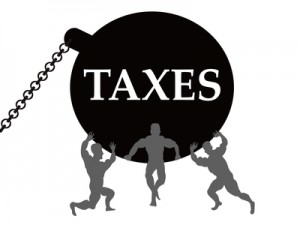 The Bureau of Justice Statistics reports that 7 percent of people over 16 reported identity theft in 2012, with most stolen information used for opening accounts. One of the dangers of having your social security number stolen when filing taxes is the IRS seeing that number used for tax filing already. You can’t get a refund or successfully file your taxes until you clear up the identity theft issue. Protect your identity in each step of the filing process to stay safe.
The Bureau of Justice Statistics reports that 7 percent of people over 16 reported identity theft in 2012, with most stolen information used for opening accounts. One of the dangers of having your social security number stolen when filing taxes is the IRS seeing that number used for tax filing already. You can’t get a refund or successfully file your taxes until you clear up the identity theft issue. Protect your identity in each step of the filing process to stay safe.
Paperwork Security
Keep your tax documents in a lockbox or safe to keep your personal information secure. Ideally, you want a water- and fire-proof safe to protect your documents from natural disasters. HR Block recommends also keeping your personal information out of email, instant messages, or social networks. No reputable service asks for your information without providing you with a secured, encrypted connection for data transmission.
E-File Yourself
Consider e-filing yourself if you don’t feel comfortable giving your information to a tax preparer. The 1040-EZ form is a straightforward version of the 1040 form that walks you through the process step by step. If you worked a wage job with W-2s and did not earn income from other sources or take itemized deductions, you can easily e-file this form yourself. The Internal Revenue Service provides a list of approved and authorized services for e-filing and tax payment. More extensive and complicated tax returns benefit from using a tax preparation service or certified public accountant, due to more complex tax laws. Follow the best practices for setting up a secure password for the e-filing service so you don’t run the risk of getting hacked, as the Wall Street Journal recommends. If you file on your own computer, run a complete virus scan and turn on a software or hardware firewall to cut down on the chance of a security breach on your end.
Talk to Your Preparer About Security Measures
Your tax preparer bears the burden of responsibility for your personal information once it’s out of their hand. Find out exactly what measures they have in place for physical and digital security. Personal documentation needs to be in a locked, secure location only accessible by authorized employees. For digital security, the website needs SSL security that encrypts the data when you log in and enter your tax information. Another security matter to discuss with your tax preparer is where hard copy backups and digital backups are stored, and the level of security for any off-site location.
Choosing a Reputable Tax Service
National chains, local tax services, certified public accountants, and online tax services present a wide range of options for tax preparation. Get personal recommendations from your friends, family, and social networks for services. Check their reputation through the Better Business Bureau, Angie’s List, and other service review websites. In addition, ask about audit protection and guarantees when going through a tax service, and keep your identity protected through a service such as Lifelock. As far as audit protection goes, Turbo Tax guarantees 100 percent accuracy with filing, and they cover any IRS penalties that occur due to their mistakes.

Great points, there is so much fraud and identity theft out there today it’s not even funny. We use a CPA and he takes the necessary steps to ensure our information is secure.